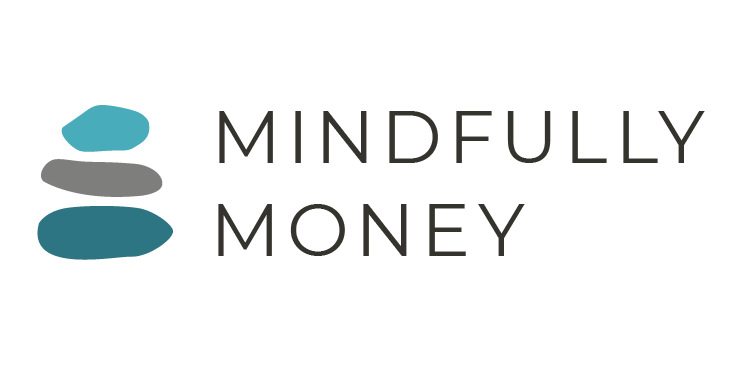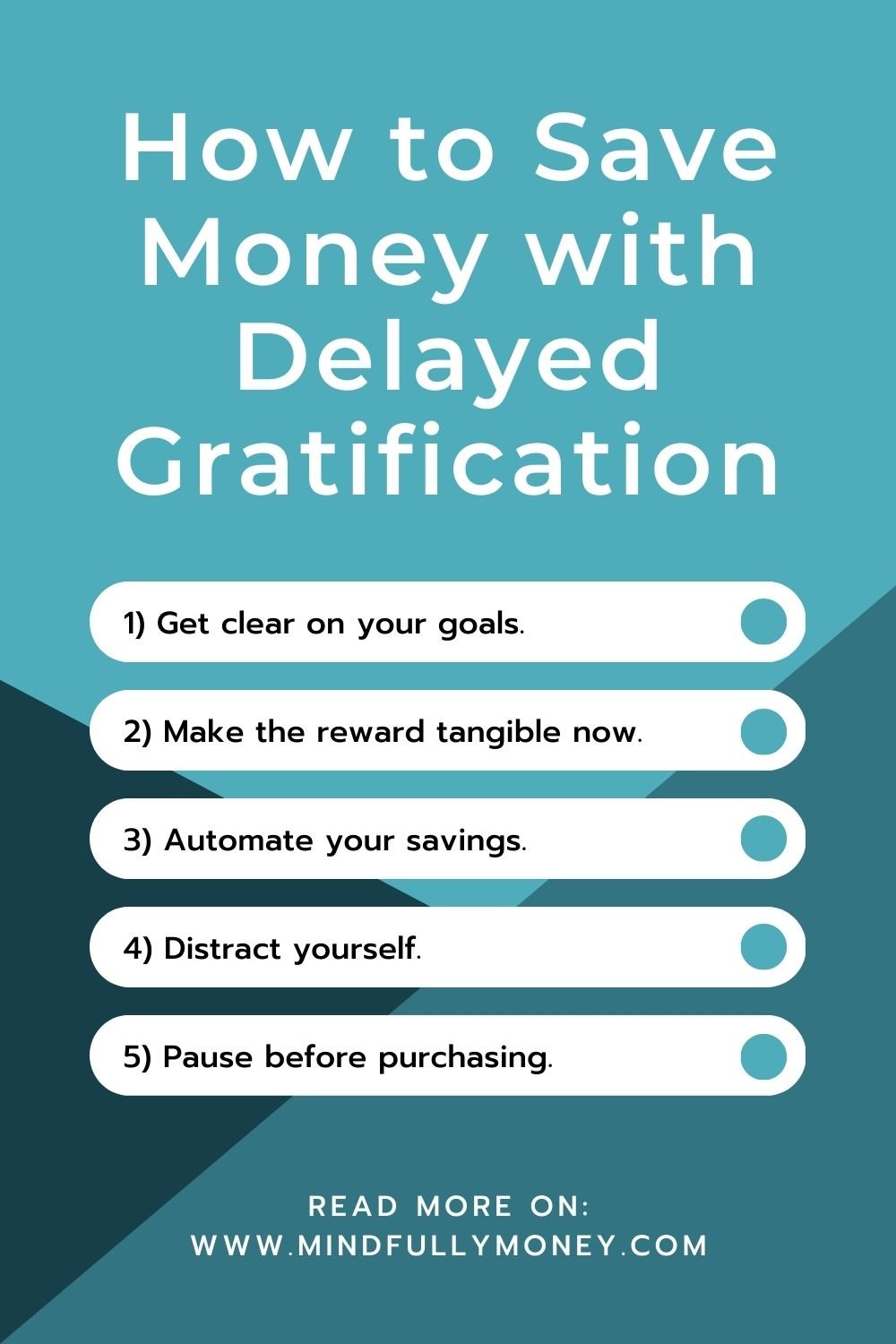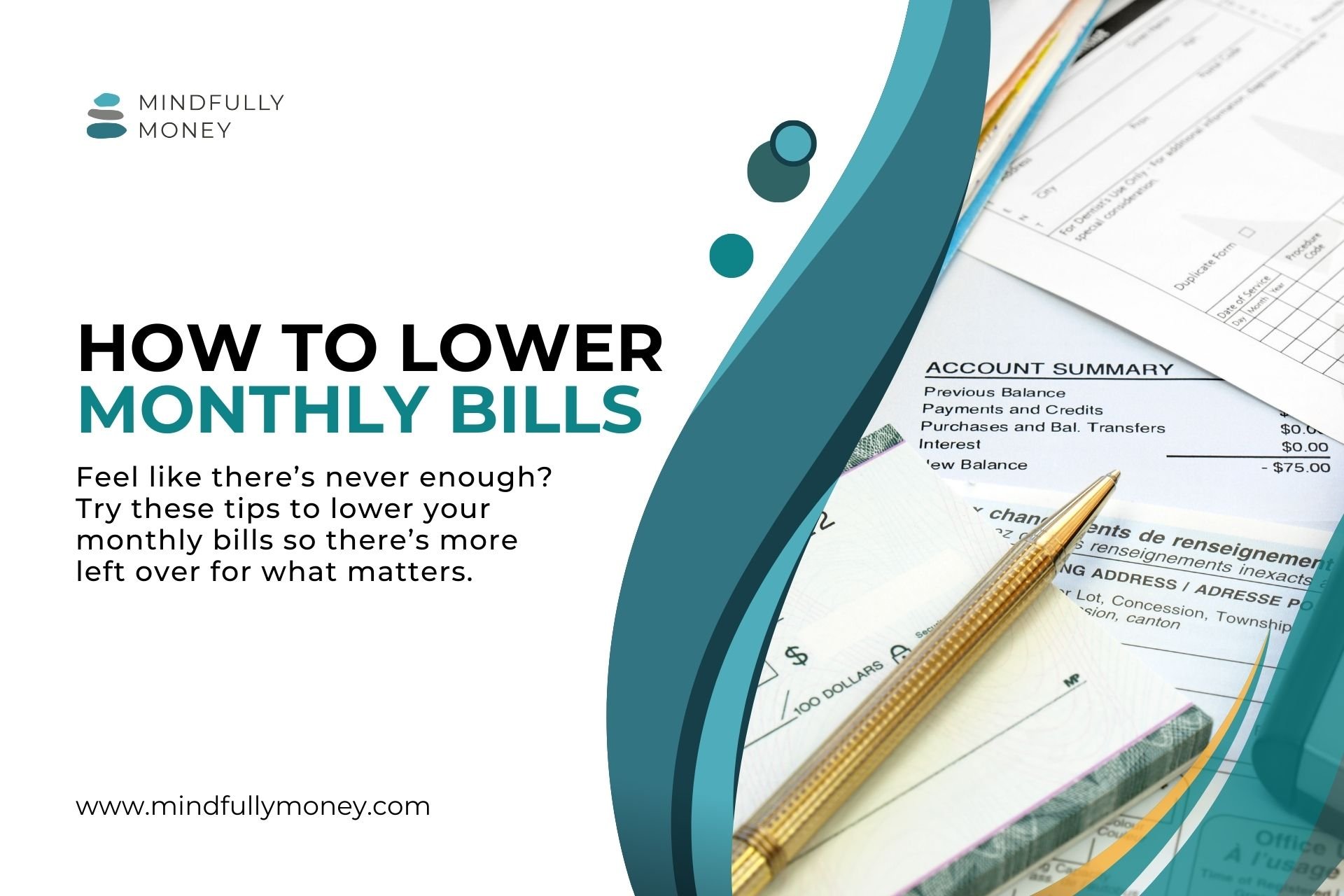Learn to Delay Gratification So You Can Spend Less and Save More Money
Delayed gratification is the ability to resist immediate reward in favor of waiting for a reward in the future. Learning to delay gratification is one of the best things you can do for your finances, your long-term goals, and life in general. Use these strategies to help you develop this life-changing skill so you can spend less, save more, and create the life you desire.
If you’ve ever tried to “just stop spending money,” you know that it’s not that easy. You have good intentions when you look at your budget or your bank account. In that situation, you have a cool head and it’s a lot easier to decide that you’re going to stick to your list next time you go to Target. But we all know what happens next: when you’re at the store or looking at online sales, your emotions take over. Next thing you know, your cart is full of things that you’ve decided you “need.”
This is totally normal. You’re not defective or bad with money—it’s just the way our minds work. Your brain is always searching for ways to feel good in the present moment. For most of our existence, humans didn’t live that long and there was no reason to plan for the long term. Saving money simply isn’t in our DNA.
Besides that, humans are emotional creatures and we certainly don’t make rational decisions. In fact, if you’ve read Predictably Irrational by Dan Arielly, you know that we make irrational decisions in very predictable ways. We think that we are making rational decisions, but when it comes to money, that is almost never the case.
So when you’re trying to learn how to spend less and save more money, you can’t simply decide that you’re going to stop buying so many things. You need to find strategies to overcome the emotional responses causing you to spend more than you intended.
One of these strategies is delayed gratification.
Delayed gratification is one of the most important financial skills a person can have. Saving for future goals requires that we take action now so that we can enjoy the rewards later. The tendency to desire immediate reward is a natural human response. Our brains somehow tell us that if we don’t get what we want right now, something bad will happen. We have to train our brains to accept that not having something right away is not a major disaster.
How to Delay Gratification
Make the reward tangible now.
One of the challenges with financial goals is that the reward is generally in the future. Sometimes it is the near future, as with saving for a vacation or a home project. Other goals, like retirement, are much farther in future, making it even more difficult to envision. When the results don’t feel real, it is easy to put off saving.
One way to make the reward more immediate is to create a visual chart showing progress toward a goal. Others find success with creating a vision board with pictures that evoke a feeling. For example, you could create a collage of pictures of places you want to stay, eat, or visit on your vacation. A vision board for retirement might have words or pictures of things you want to do or how you want to feel. Spend some time thinking about what you want life to look like so you’re clear on why you’re saving the money beyond just “I’m supposed to.”
Be creative in finding ways to bring the feelings of satisfaction when you meet your goal into the present. Having a clear idea of the end result that you can envision now will help you when you need a little extra boost for putting that money away.
Automate saving
By far one of the best things you can do to overcome the desire to spend now versus saving for later is to remove the decision entirely. Decide how much money you want to put away for your goals and set up an automatic monthly transfer to a different savings or retirement account. Eventually, you’ll stop feeling like that money is available for spending because you won’t even see it.
Take a break before buying
When you feel the urge to buy something, step back and wait. I find that the purchases I feel the worst about are ones where I bought immediately on impulse, usually to take advantage of a deal. About two or three days later I feel the guilt and regret washing over me as I think about the money I wasted on something I didn’t really want.
I’ve learned that for me, it takes a week or two for me to get over the strong desire to purchase something. If I can wait that long, I have a better idea of whether or not it is something that I really do want to purchase. That can be a long time for someone to wait, at least at first. If several days feels like too long, start with one day. Maybe you need to just get yourself out of the store and tell yourself you can always come back later. If this is difficult, start small and gradually increase the amount of time you wait before purchasing something not on your list.
Identify other ways to satisfy desires or distract yourself
It is easy to get into the habit of buying to satisfy desires. Choose in advance some ways you can satisfy your feelings in other ways to help you build new habits. Get outside, go for a walk, read a book, call a friend, find a project. The possibilities are endless. Having a plan for something else you can do when you can’t stop thinking about an item you want now will help you reset your mind.
Practice
Delayed gratification is a habit that can be learned over time. My daughter no longer starts crying the moment she realizes she doesn’t have what she wants because she has practice in waiting. I’m getting better at leaving things in online shopping carts for a few days and am now finding that I often forget about items altogether.
Know what is important
Delayed gratification requires that you be clear about your values and goals. Knowing what is important to you and why gives you important perspective when making purchasing decisions. The more you can envision the larger goal, the easier it becomes to accept a delayed reward. Not only can this help you save money, but it can also help you create a more satisfying and rewarding life.






